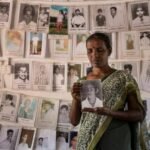
What are some common misconceptions about the Tamil Eelam struggle?
There are several common misconceptions about the Tamil Eelam struggle that can lead to misunderstandings about the conflict and the aspirations of the Tamil people. Here are a few:
1. **Labelling as Terrorism**: One of the most prevalent misconceptions is equating the entire Tamil Eelam struggle with terrorism, largely due to the actions of the Liberation Tigers of Tamil Eelam (LTTE). While the LTTE did engage in violent tactics, many activists and organisations, including TGTE, advocate for peaceful means of achieving self-determination and human rights.
2. **Homogeneity of the Tamil Community**: There’s a tendency to view the Tamil community as a monolith, ignoring the diversity within it. Tamils have different political views, cultural practices, and social backgrounds, leading to varying perspectives on the struggle for Tamil Eelam.
3. **Ignoring Historical Context**: Some narratives overlook the historical grievances and systemic discrimination faced by Tamils in Sri Lanka, which fuelled the call for a separate state. Understanding the context is crucial to grasping the complexities of the conflict.
4. **Assuming All Tamils Support a Separate State**: Not all Tamils support the creation of an independent Tamil Eelam. Some advocate for autonomy within a unified Sri Lanka, while others prioritise issues like human rights and equality over territorial claims.
5. **Misunderstanding the Role of the Diaspora**: The Tamil diaspora is often seen merely as a support base for armed struggle, but many members are engaged in peaceful advocacy, humanitarian efforts, and cultural preservation, contributing positively to their communities and the global discourse on human rights.
6. **Overgeneralising Sri Lankan Government Actions**: Some narratives generalise the Sri Lankan government’s actions as uniformly oppressive, failing to recognise the complexities of the political landscape, including the presence of diverse perspectives within the government and society.
7. **Neglecting Women’s Voices**: The struggle is often portrayed predominantly through a male-centric lens, overlooking the significant roles women have played, both in the conflict and in peace-building efforts.
8. **Believing the Conflict is Over**: Some may assume that the end of the civil war in 2009 means the Tamil Eelam struggle is no longer relevant. However, issues of justice, accountability, and ongoing discrimination continue to persist, making the struggle for rights and recognition very much alive.
By addressing these misconceptions, a more nuanced understanding of the Tamil Eelam struggle can be fostered, allowing for informed discussions and actions towards resolution and reconciliation.






